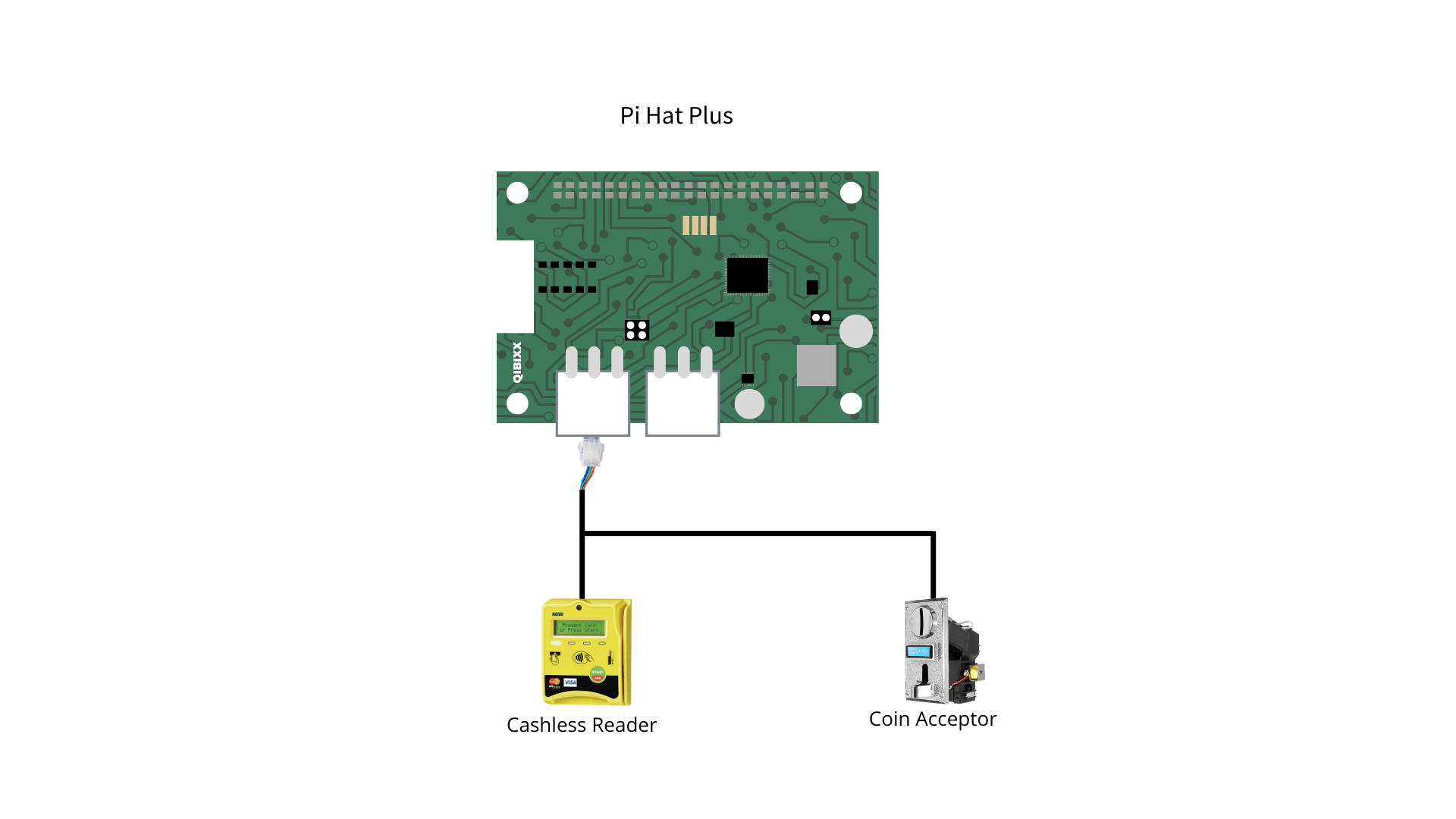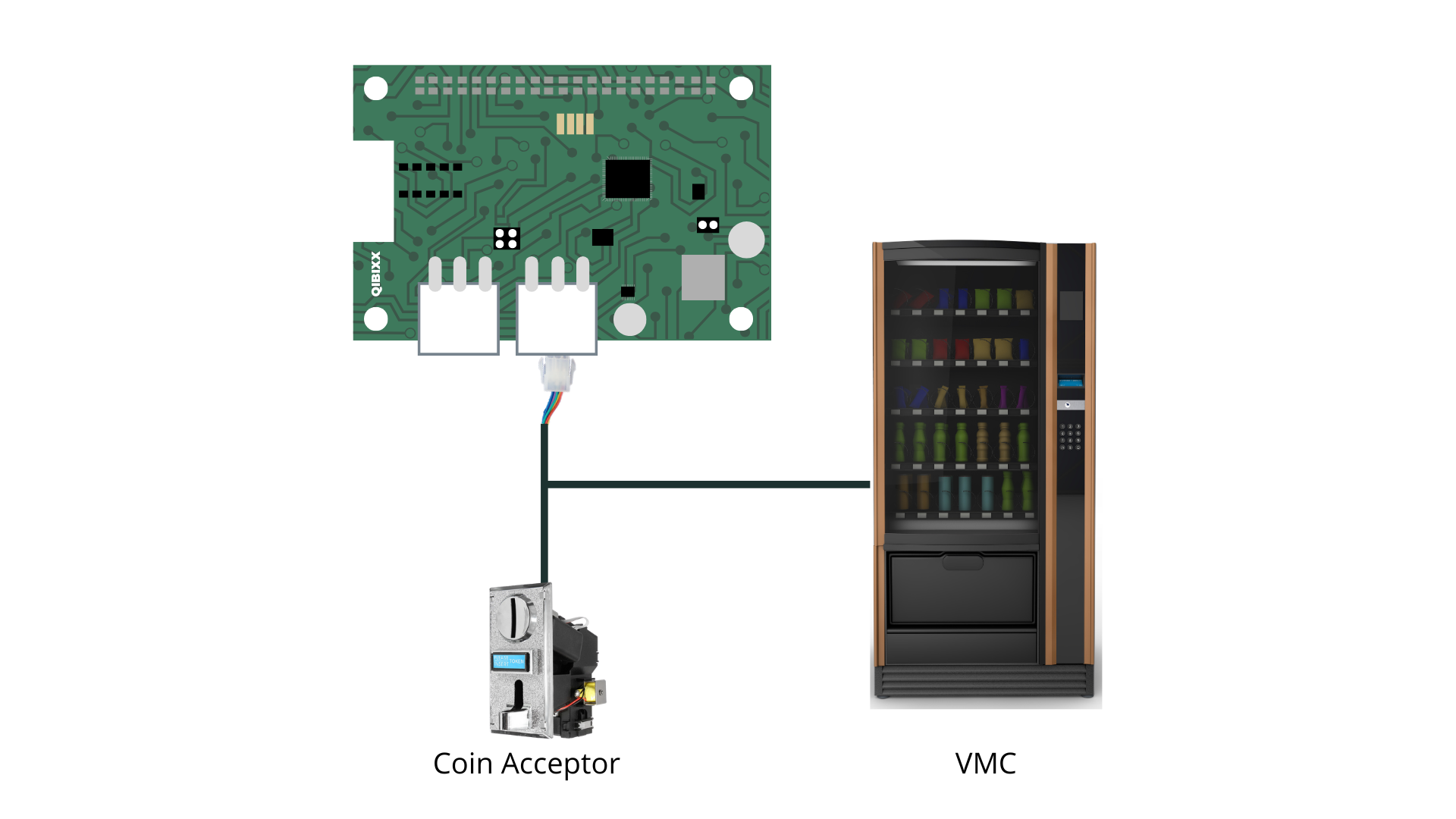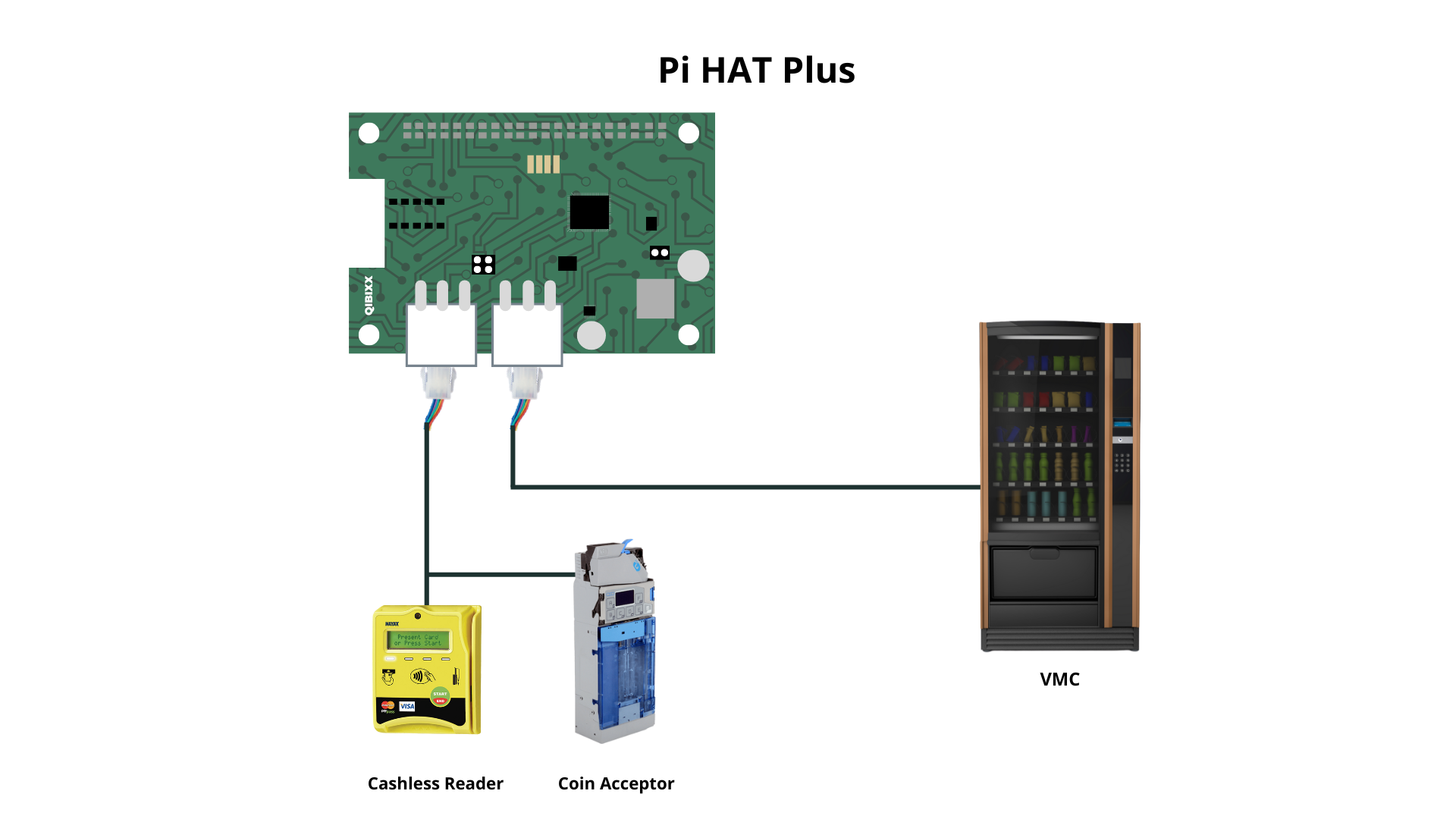
Pi Hat is a reliable MDB extension to use with the Raspberry Pi or other devices with a compatible port. It provides independent VMC, and Peripheral and Sniffing capabilities on the Plus version. The standard version has only one MDB Connector, which means that only VMC or Peripheral functionality can be used at a time, with optional Sniffing functionality. Note that Sniffing can also be used without VMC or peripheral functionalities activated.
The firmware can be updated from the Raspberry Pi Interface. Separate Master and Peripheral ports allow you to run both functions independently.
The main features of the products are:
- High level functional interface for cashless device implementations
- Independent VMC and Peripheral interfaces (uses two UARTs)
- Jumperless configuration and operation
- Firmware update capable
- Universal MDB Interface in Pi Hat form factor;
- Serial host interface capabilities;
- Precise, time-stamped sniffing from MDB bus;
- 2 years warranty;
- Developed in Switzerland, manufactured in the EU;
- High-level, easy to implement serial interface protocol;
- The USB version of the Pi Hat, has the same features has the Pi Hat Plus, with the addition of the possibility to communicate with the Host (Raspberry,PC,MAC) via USB.
Common Use Cases
The Pi Hat can be configured to work as a Peripheral or a Master on the MDB bus (further details on what Master and Slave means in this context can be found in Master (VMC) Modes , Slave (Peripheral) Modes and in deeper detail in MDB specification). When used as a Slave, a typical application is when it is necessary to translate messages from a slave peripheral (like a Cashless Reader) to a format that is accepted by that specific VMC (E.g. the VMC does not support "Select Product" first, but the cashless reader does , this can be done if the Pi runs software to interact with the Pi Hat to give advanced credit to the VMC and then, after product selection, request the credit from the Cashless Reader). On the other hand, in Master Mode it is possible to run the actual VMC controller software in the Pi and then connect the peripherals through the MDB Bus. The following pictures explain how the Pi Hat (Plus) should be connected to the MDB Bus according to the desired use case.
Conect MDB-Cable in Master Port when the Pi Hat is used as a Master(VMC) or Sniffer in the Bus .
Connect MDB-Cable in Peripheral Port when the Pi Hat is used as a Peripheral.
The examples below depict a Pi Hat Plus, but the standard version can be used as well depending on what is configured via the serial console (Pi Hat Standard has only one MDB port).
VMC Mode

Pi Hat Plus connected as a Master (VMC)
Peripheral Mode
Note that in this case, typically the Pi Hat will be a Peripheral (a device that responds to the VMC's commands) to the VMC and act as a Master to the Peripheral (the Cashless Reader in the example above), which should be connected in the open port in the image below.

Pi Hat Plus connected as a Slave (VMC)
Split Mode (Master and Slave Modes Simultaneously)
In this specific case, the Pi Hat is connected to the VMC as a "Slave" and to the Payment Peripherals as a "Master". This is useful for cases where it is necessary to "translate" messages betwen the VMC and the payment peripherals (which is done on the Raspberry Pi, but sent out to the MDB by the Pi Hat).
Note that the Jumper set 1 (see Connectors & Jumpers) needs to be open for this specific case.
